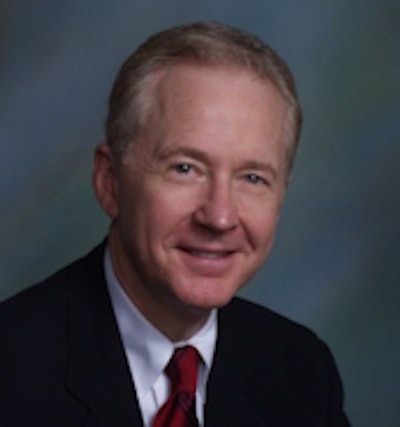
The job market is not what one would call robust for would-be nuclear medicine residents, and their limitations in reading hybrid images is just one reason why, according to a new survey published in the March issue of the Journal of the American College of Radiology.
In the survey, nuclear medicine residents expressed concerns about their preparedness for employment and acknowledged their limitations in reading CT images. Fewer than half of the respondents thought they were ready to independently interpret CT for all pathology.
That lack of expertise is one reason why radiologists have an advantage in the job market, but efforts are underway -- albeit slowly -- to expand training to broaden nuclear medicine residents' expertise.
Employment outlook
"Nuclear medicine physicians who are also radiologists have an easier time getting jobs than those who aren't," said lead author Dr. Jay Harolds from the division of radiology and biomedical imaging at Michigan State University's College of Human Medicine. "We have also found out that international graduates have a harder time finding jobs than those who are American graduates."
 Dr. Jay Harolds from Michigan State University.
Dr. Jay Harolds from Michigan State University.
Harolds and colleagues emailed their survey to all 54 nuclear medicine program directors and asked them to distribute the questionnaire to their residents. In June and July of 2011, 61 (39%) of 155 nuclear medicine residents responded to the survey. Among the respondents, three (5%) had completed radiology residencies and 24 (41%) were in their final year of training. The majority of replies were from residents in three-year programs.
As Harolds mentioned, the majority of nuclear medicine residents polled believe the job market is much better for diagnostic radiologists than nonradiologists, whether they were trained in the U.S. or abroad. Approximately 50% said the marketability of U.S. and international radiologists is "outstanding" or "very good," while more than 60% believe the marketability of nonradiologists is "poor" (JACR, March 2014, Vol. 11:3, pp. 221-224).
If a job candidate can only read a nuclear medicine study, many radiology groups will be reluctant to hire that person, Harolds said. These practices are looking for individuals who can interpret a wide breadth of images to handle overnight and weekend call duties.
"Typically, they can't [take call on off-hours] unless they are also radiologists," Harolds told AuntMinnie.com. "Weekend call and night call are big things, with 24/7 expectations now. People expect quick reports, and report turnaround time has hurt the job market as well."
Hybrid image interpretation
Therefore, competency in reading hybrid images from PET/CT, SPECT/CT, and PET/MRI becomes more of a necessity for nuclear medicine physicians. "Clearly, [nuclear medicine physicians] need to know about these other modalities and become expert in them," Harolds added. "Those are big handicaps that these individuals have."
The majority of nuclear medicine trainees felt competent to independently interpret CT for anatomic localization and for common local pathology, but fewer than half thought they were ready to independently interpret CT for all pathology, the survey found.
"According to our survey, senior residents in three-year programs claim to be only slightly better prepared in CT interpretation for all pathology than seniors in two-year programs," the authors wrote.
Prospective nuclear medicine residents are also finding employment difficult because so much of nuclear medicine is nuclear cardiology, and those exams are typically whisked away and read by cardiologists.
The authors cited two studies that estimated that nuclear medicine physicians in the U.S. interpret fewer than 25% of all nuclear medicine examinations, while cardiologists and radiologists read the rest. Given that nuclear cardiology represents more than 50% of the nuclear medicine examinations in the U.S., according to previous research, nuclear medicine physicians compete directly with cardiologists in that regard.
"That takes a lot of potential studies that [nuclear medicine physicians] could be reading away from them," said Harolds, who also serves as the radiology residency director for Grand Rapids Medical Education Partners, which oversees the residency program.
Training options
Currently, there are three types of nuclear medicine residency available for applicants: three years after one year of graduate medical education, two years after two years of graduate medical education, and one year after completing an accredited diagnostic radiology program.
Previous studies have found that the majority of nuclear medicine residents are nonradiologists enrolled in two-year or three-year training programs, while the one-year training program includes individuals already trained in diagnostic radiology.
Baylor College of Medicine recently chose not to renew its nuclear medicine residency, due in part to employment prospects and recruiting issues.
 Dr. Milton Guiberteau from Baylor College.
Dr. Milton Guiberteau from Baylor College.
"One of our motivations for not continuing the program was that it was perhaps not the best situation in which to train people that we feel could not get jobs without training in something else," said study co-author Dr. Milton Guiberteau, professor of radiology and nuclear medicine at Baylor. "It isn't in anyone's interest to recruit people to commit to programs knowing that they can do this training, but the job market for them remains quite dismal."
To improve employment prospects and better train residents for a variety of image interpretations, there have been calls for more joint radiology and nuclear medicine training programs, but so far they have been slow to materialize.
Guiberteau is president-elect of the American Board of Radiology (ABR), which has had talks in the past with the American Board of Nuclear Medicine (ABNM) and other stakeholders to develop training pathways that lead to board certification in both disciplines.
"From our point of view, we think that is the way to start, because if we say we will accept people for our examination who satisfy these requirements, that would give motivation to the [residency review committees (RRCs)] to develop training pathways," he added. "We are working on it, but we right now have no uniform solution."
Some progress was made in 2010, when ABR and ABNM each developed four-year diagnostic radiology programs in which residents could be board-certified by both organizations. The four-year program includes 16 months of training in nuclear radiology or nuclear medicine.
The program is in place, and this year ABR will examine its first resident to have completed the requirements. "But [the program] is still quite small and not nearly enough to produce sufficient well-trained nuclear radiologists or nuclear medicine folks to populate the vacancies that will ultimately happen when existing practitioners retire," Guiberteau said.
With the survey results in hand, Harolds and colleagues plan to analyze the barriers to employment and the perceptions of would-be residents and physicians.
"We really don't intend to let it drop until we can see something done for people who want to train in nuclear medicine and be marketable in terms of obtaining employment and who will fit into a practice pattern for the best care of patients," Guiberteau said.
"We are more hopeful than we were a few years ago, but still it would be disingenuous for me to say that the problem is on the verge of being solved," he said.
For the next part of our series on the nuclear medicine job market, AuntMinnie.com spoke with various residents and educators about job prospects in the discipline. Click here to read part 2.




















